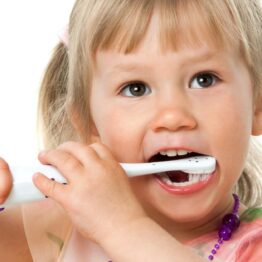
Brushing with an electric toothbrush can elevate your daily dental care routine, but an often overlooked aspect of ensuring its efficacy is knowing when to replace the brush head. So, if you’ve ever asked yourself, “How often should I change my electric toothbrush head?” we’re here to help. Here’s a no-nonsense guide on how often and why you should switch out your electric toothbrush head.
The Timeline for Change
Dentists generally agree that you should change your electric toothbrush head approximately every three to four months. This timeframe isn’t arbitrary; it’s rooted in the balance between a brush head’s effectiveness and hygiene. Over time, bristles become worn and frayed, losing their stiffness and, consequently, their ability to sweep away plaque and debris effectively. Also, aged bristles can be harsh on the gums, which can compromise your dental health.
Therefore, it’s generally recommended to replace your electric toothbrush head every 12 to 16 weeks. However, remember that the lifespan of a brush head can vary depending on usage, the model and the individual’s brushing style.
Also, keep an eye out for splayed bristles. Once you notice the signs of wear, it’s time to swap out the head—even if it’s before the three-month mark. How often you change the electric toothbrush heads should also be dictated by their condition—not just the calendar.
Brand and Model Guidelines
Electric toothbrushes come in various models, each with unique features. It’s essential to consult the manufacturer’s guidance for your specific model, as some may include indicators that alert you when it’s time for a new head. For instance, some brush heads have bristles that fade in colour as a visual reminder that a replacement is due.
If you’re using a sonic toothbrush, you’re harnessing one of the most effective tools for oral hygiene. Sonic toothbrush heads require the same attention as other brands. Remember that despite their advanced cleaning action, sonic brush heads can still harbour bacteria and lose bristle strength, necessitating replacement every three to four months.
The Consequences of Neglect
Why is it crucial to change your electric toothbrush head? An old brush head not only works poorly but can also harbour bacteria, mould and yeast. That could lead to infections and other health problems. Furthermore, worn-out bristles can be abrasive on enamel and gums, leading to sensitivity and other dental issues. Regular head replacement is not just a matter of dental hygiene but also of overall health.
Were you sick recently? Following an illness, replace your toothbrush head immediately. Germs can cling to the bristles and potentially lead to re-infection. In this context, it’s better to be safe and start fresh than to risk prolonging illness.
Are All Toothbrush Heads Interchangeable?
One common question is whether electric toothbrush heads are interchangeable. The answer varies by brand and model. Some manufacturers design their toothbrushes to accept a variety of head types, while others require specific replacements. Using the wrong type can damage the brush or reduce its cleaning effectiveness. So, be sure to check before purchasing electric toothbrush replacement heads online.

Making the Switch
You already know the answer to the question, “How often should you change your electric toothbrush head?” But how should you do it exactly?
Switching out the head of your electric toothbrush is typically a straightforward task. Most heads snap on and off easily, allowing for quick replacements. It’s a smart idea to buy brush heads in bulk so you always have a spare ready for when it’s time to make the switch. Want to remember the right time to replace your brush head? Some people align the swap with the change of seasons—a simple and effective reminder.
Tips for Extending Brush Head Life
While you can’t halt the natural wear and tear that comes with regular use, there are ways to extend the life of your brush head so it reaches the three-month mark:
- Rinse thoroughly: After each use, rinse the brush head under running water to remove toothpaste and debris.
- Shake off excess water: Post-rinse, shake the brush head to expel additional moisture and prevent mould growth.
- Store upright: Store your toothbrush in an upright position, preferably in a well-ventilated area to dry out between uses. Don’t leave your toothbrush in the bathroom.
Final Advice and Recommendations
In conclusion, changing your electric toothbrush head is a foundational practice in oral hygiene. It ensures that your brushing remains effective, prevents unnecessary exposure to bacteria and helps maintain overall dental health. By staying vigilant and proactive about your toothbrush maintenance, you’re investing in the longevity and vibrancy of your smile. Remember, a well-kept toothbrush is a cornerstone of a robust oral hygiene regimen, leading to a healthier mouth and a happier you.
If you’re unsure when to replace your brush head, consult your dentist. They can provide personalised advice based on your oral health status. Additionally, they may suggest the best sonic toothbrush available in Australia, ensuring you’re using the most effective tools for your dental care routine.
Read more
1

Dilemma: Why Are My Teeth

Does Private Health Cover





